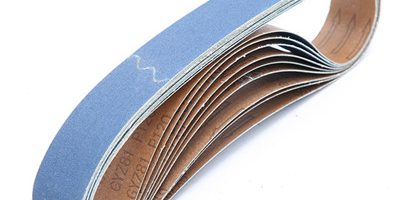Achieving precision in woodworking often relies on the careful use of tools and techniques. Sanding belts are essential tools in a woodworker’s arsenal for achieving fine details and smooth finishes. In this blog, we’ll explore some advanced sanding belt techniques to help you elevate your woodworking projects to the next level.
- Edge Sanding: To create clean and square edges on your wood pieces, use a sanding belt mounted vertically. Ensure the wood is securely held in place, and move it evenly across the sanding belt to achieve a smooth, square edge.
- Contour Sanding: Sanding belts can conform to curved or contoured surfaces when used correctly. This is particularly useful for shaping and finishing curved furniture parts or detailed carvings. Ensure the belt is tightly tensioned, and move the workpiece steadily along the curve.
- Angle Sanding: When precise bevels or angles are needed, an adjustable sanding table or jig can be used in combination with the sanding belt. This allows you to maintain consistent angles across multiple pieces, such as table legs or chair spindles.
- Resin Bonded Belts: For tasks that require a delicate touch, consider resin-bonded sanding belts. These belts are less aggressive and are excellent for fine finishing work, such as preparing surfaces for varnishing or applying a clear finish.
- Progressive Grits: When working through multiple grits, start with a coarser belt to remove material efficiently and then progressively move to finer grits. Each pass should refine the surface further until the desired finish is achieved.
- Cleaning and Reshaping Belts: Sanding belts can become clogged with wood dust, reducing their effectiveness. Use a cleaning stick or belt cleaner to remove debris and expose fresh abrasive material. Additionally, consider belt dressing to prolong the belt’s lifespan.
- Backing Plate: When sanding small or delicate pieces, using a backing plate or piece of wood behind the workpiece can prevent the sanding belt from causing unwanted marks or damage.
- Safety Measures: Always prioritize safety when working with sanding belts. Use appropriate safety gear, such as safety glasses, dust masks, and hearing protection. Maintain a dust extraction system to keep the workspace clean and minimize health risks associated with wood dust.
These advanced sanding belt techniques can help you achieve precise results in your woodworking projects. Remember to practice and perfect your technique, as mastering these methods can make a significant difference in the quality of your finished pieces.










